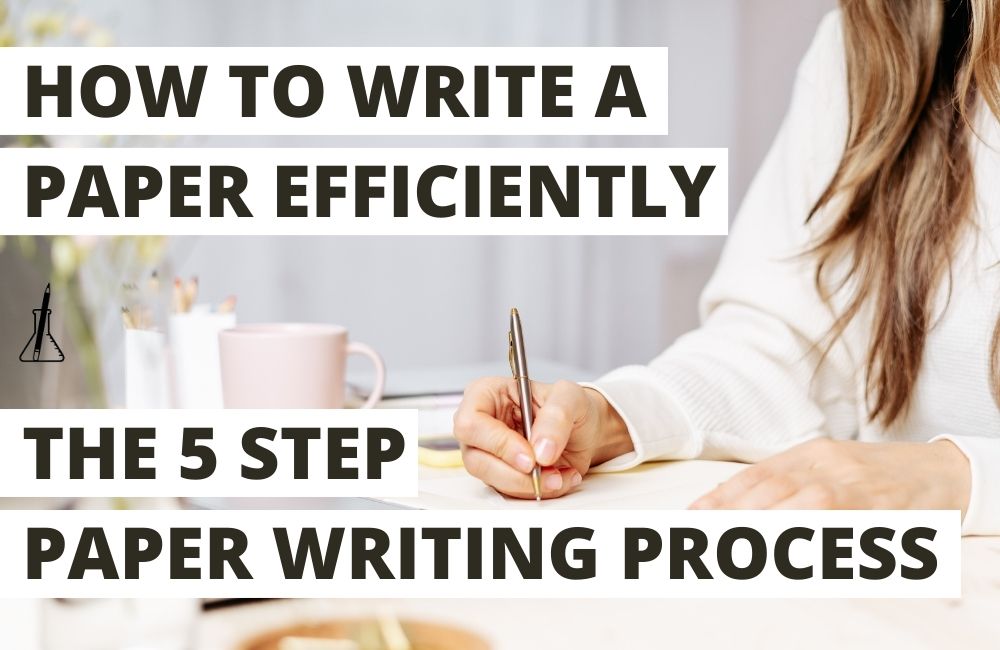Writing papers takes you a lot of time? And you never really know what to write in which order? You are not alone! In this post, I’m describing what nobody seems to talk about: what process to use for writing a paper.
A client told me on a coaching call recently that her PhD advisor urged her to start writing a paper with the introduction. This often meant that she would spend weeks writing and tweaking her introduction getting it into perfect shape. Only to discover – after writing the Results section – that often her introduction focused on the wrong aspects. She then either had to rewrite her introduction (once again!) or she was stuck with a paper that didn’t tell a consistent story!
Unfortunately, academia is full of bad advice like this. Plus, you are in the minority, if anyone even bothered to teach you a process for writing papers at all. Most scientists are left to figure out how to write papers that get published in high-impact journals for themselves.
How about you? Do you use a consistent process to write papers? A process that you have written down and can just follow every single time you write a paper?
I believe that you need a well-defined, repeatable process to write papers if you…
- are waiting until inspiration strikes or you are feeling creative to start writing your paper.
- spend a considerable amount of time editing, revising and rewriting your drafts.
- want to tell a clear, concise and compelling story in your paper.
- don’t know where to start.
- aren’t spending any time on developing your paper and think that writing only means typing words.
- don’t want to waste time.
- don’t enjoy writing.
If that’s you, don’t worry, that’s what I’m here for. Let me describe the proven process that I teach and use in my online academic writing course, the Researchers’ Writing Academy.
Here’s the 5-step paper writing process I use with my clients:
Step 1: Identifying the Story
We definitely don’t want to start writing our paper with the Introduction section. We, the authors of the paper, need to develop our story based on the data we have instead of starting with writing the section that our readers see first.
That means we need to get our data in order and need to find a way to build our argument. In the first step of the process, we – among other things – define our audience, decide on a central message for our paper and create a storyboard with our figures and tables.

Step 2: Conveying the Results
Once we know how we should arrange our figures and tables to build our argument, we need to think about how to best convey the information that is captured in those visual elements in writing. Before you open your word processor to get started, I would urge you to carefully plan your text in the Results section to ensure that the text in this section flows. Remember to take your reader by the hand and guide them through your argument. Once you have decided on a structure for the Results section, you can also start thinking about the Materials & Methods section.
Step 3: Motivating your Research
After we have developed (or maybe even written) our Results section, it’s finally time to develop the Introduction section! This introduction to your paper should convince your reader that your study is needed. It’s the section where a large part of the storytelling happens. Attentive readers of this blog know which key story element I’m referring to here. 😉
Step 4: Contextualising your Findings
Once we know which information our Introduction contains and which findings we have presented in our Results section, we can start putting them into perspective for our readers. For most writers, the Discussion section is the most creative one to write.
Step 5: Summarising and packaging your study
Almost done! All the major parts of your paper are written. Now it’s time to package the deal, write a title, abstract and cover letter (and any other summarising/advertising elements your paper needs, such as a graphical abstract, highlights etc.). When you have followed this 5-step process, this last step will be quick because you have already defined all of the key story elements needed to write these parts.
There you go. This is the 5-step paper writing process I use with my clients.
If you would like to learn the process in detail (including handy templates and checklists for each step!), I’m inviting you sit in on this free training and preview to my online academic writing course, the Researchers’ Writing Academy.







